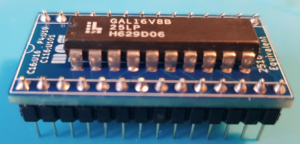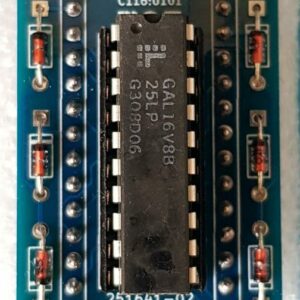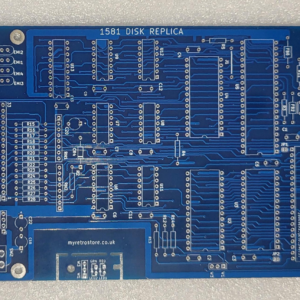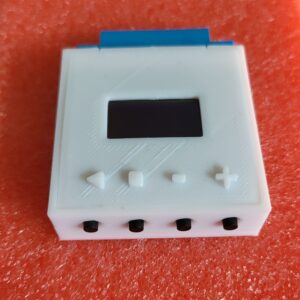PLA Replacement Plus 4
This is a replacement PLA for your Commodore 16 / 116 / Plus 4 (251641-02)
Note: This version is similar to the one I am selling under 254932003433, however the layout in this revision is specifically changed for the Plus4 (The original version worked, but the PCB+Socket+GAL was too high and the Plus4 case did not close. This will still however work in the C116/C16 as well.)
For this version the GAL socket has been removed, PCB footprint made smaller, and SMD components used on the underneath of the PCB.
Take special note on this version.
– The GAL has been soldered in so can’t be easily removed to be reprogrammed should the author of the PLA16V8 ever release an updated version (This is however unlikely)
– For this PCB to fit the Plus4 (with the case closed), it will be required to be soldered directly to the Plus4 motherboard. (If there is a socket already in the motherboard it will need to be removed)
This requires some good soldering skills. Do not attempt this without the proper desoldering kit. You will most likely damage the Plus4 motherboard. I will not be held responsible for any mishaps and or damage to the Commodore / PLA should it be fitted incorrectly or motherboard damaged from removing the socket.
For the reasons above I would only suggest using PCB this for the Plus4, as the other version is easier to upgrade (Should a new version ever be released)
The PLA16V8 is a PLA that consists of a single GAL16V8B chips from Lattice Semiconductor.
Fully programmed, soldered, assembled and tested. Genuine Lattice GAL16V8B ICs.
IC Socket has gold plated rounded pins for easier insertion and better connectivity.
More info available from the original designers website
Quote from above site: “How good is it?”
Just as good as the PLA20V8. Building a good PLA for the Commodore TED series computers is a lot easier than building a good PLA for the Commodore 64, because:
There exist no CAS race in the TED computers. The TED generates a proper DRAM MUX signal, therefore DRAM timing doesn’t depend on the propagation delay of the PLA (the PLA isn’t even involved).
The only PLA signal that is available on the cartridge port is the PHI2 output. Where C64 cartridges can do all kinds of PLA tricks, this is not possible on a TED computer, thus a PLA replacement cannot fail on such tricks.
The TED computers have less chips and therefore, there are fewer opportunities for the PLA to make a chip misbehave.
Therefore there is exist no timing issues and no issues with logic levels. The only thing one might get wrong with a Commodore 16 PLA is switching noises, which is why you should still not use an EPROM as PLA replacement, but the PLA16V8 does not suffer from switching noises thanks to the use of a GAL.
Conclusion: There should be zero compatibility problems.
Make sure you insert the the replacement when your computer is off, and take note of the orientation. Failure to do this and you risk damaging the PLA replacement and your Commodore computer.





